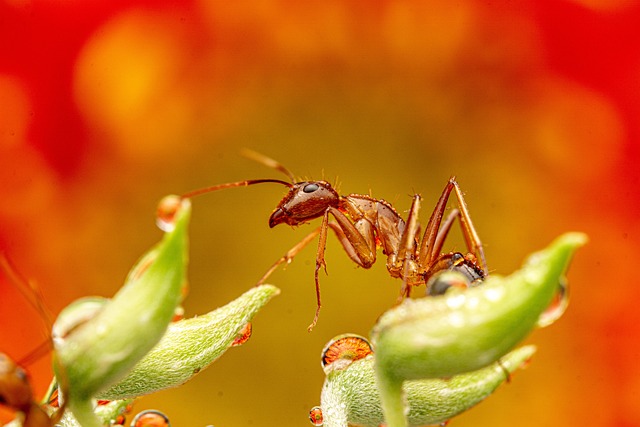Boxelder bugs (Boisea trivittatus) are North American pests that enter buildings through gaps around windows, doors, and other openings. Effective pest control for boxelder bugs involves sealing entry points with caulk or weatherstripping, regular inspections during fall for overwintering preparation, and maintaining a clean home environment. Proactive measures like routine cleaning and clutter removal significantly reduce future infestations.
Sealing entry points is a powerful strategy in the fight against boxelder bugs, preventing their relentless invasion. These pests can quickly transform your home into their breeding ground, but with the right approach, you can keep them at bay. This article guides you through understanding boxelder bug behavior and identifying weak spots, offering effective sealing methods, and providing maintenance tips to ensure long-lasting pest control for these persistent critters.
Understanding Boxelder Bugs and Their Entry Points
Boxelder bugs, scientifically known as Boisea trivittatus, are a common agricultural and urban pest found in North America. They get their name from their preference for boxelder trees (Acer negundo) but can also be attracted to other tree species and structures with suitable habitats. These insects undergo two life stages: nymphs and adults. Nymphs, or immatures, resemble smaller versions of the adults and go through several molting stages before becoming fully grown. Understanding these life cycles is crucial when implementing pest control for boxelder bugs.
Boxelder bugs enter buildings in search of warmth during cold months or to lay eggs on suitable surfaces. Common entry points include gaps around windows, doors, utility pipes, vents, cracks in foundations, and openings in screens or siding. Sealing these entry points with caulk or weatherstripping is an effective way to prevent their infiltration. Regular inspections, especially during the fall when they prepare for overwintering, are essential to identifying weak spots and ensuring a bug-free environment.
Identifying Common Sealing Methods
Many homeowners often turn to various sealing methods as part of their pest control for boxelder bugs strategy. Identifying entry points is a crucial step in preventing these pests from invading your space. Common sealing techniques include using caulk around windows and doors, especially those leading to outdoor areas. This simple yet effective method fills gaps and cracks where boxelder bugs might find their way inside.
Additionally, weatherstripping can be employed for tighter seals around doorways and windowsills. Sealing with metal or plastic mesh screens is another popular choice, allowing for better airflow while keeping out smaller insects. These methods are not only practical but also serve as a long-term solution to boxelder bug infestations, ensuring your home remains pest-free throughout the year.
Effective Sealing Techniques for Long-Lasting Protection
Sealing entry points is a highly effective pest control for boxelder bugs, offering long-lasting protection. It involves using a variety of techniques depending on the type of opening. For cracks and crevices, applying caulk along the edges can create an impenetrable barrier. This simple yet powerful method prevents bugs from finding their way inside, ensuring your home remains bug-free.
When dealing with larger gaps or openings, weatherstripping is a suitable solution. It involves installing thin strips of flexible material, such as foam or rubber, to seal spaces between windows, doors, and walls. This technique not only keeps boxelder bugs out but also enhances energy efficiency by preventing air leaks. Regular maintenance and reapplication are key; re-caulk and re-weatherstrip as needed to maintain the integrity of these barriers.
Maintenance Tips to Deter Re-infestation
Effective pest control for boxelder bugs involves proactive maintenance to prevent re-infestation. Regularly inspect your home, especially during the late summer and early fall when boxelder bugs are most active. Seal any gaps or cracks around windows, doors, and other entry points using caulk or weatherstripping. This simple step can significantly reduce the risk of future invasions.
Keep your home clean and free of clutter, as boxelder bugs are attracted to debris and organic materials. Remove fallen leaves and branches from around the perimeter of your house, and ensure that bird nests or other potential habitats are removed or properly sealed off. Regularly vacuuming and washing bedding and linens in hot water can also help eliminate any lingering boxelder bugs or eggs.
Sealing entry points is a key strategy in effective pest control for boxelder bugs, preventing their re-infestation and maintaining a bug-free environment. By understanding these insects’ preferred routes and employing robust sealing techniques, homeowners can ensure long-lasting protection. Regular maintenance and proactive measures will further deter boxelder bugs, providing peace of mind and a comfortable living space.
